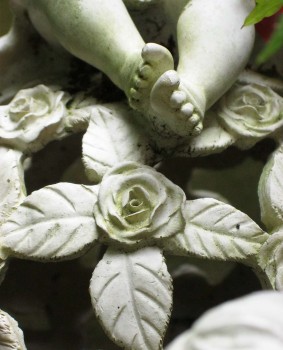Cemetery Statue Meanings
These days, gravestones and cemetery markers are simple in their design. Most of us will recognize the flat rectangles that are placed at the head of the grave, providing plenty of room for an inscription, a vase, and even an engraved image. These headstones tend to be neat and cost-effective, making them ideal for all families.
However, a walk through an older or more decorative part of the cemetery might yield visions of huge gravestones, towering statues, and other images. These look beautiful but also serve a more practical purpose: like funeral flowers, each statue carries its own meaning—many of which still hold true today. If you would like to do more than place a headstone on your loved one’s grave, you can include a small statue or carving that captures the perfect expression of your love.
- Angel: One of the most common cemetery statues is that of an angel. The angel might be blowing a trumpet, playing a harp, weeping, or simply standing tall.
- Bird: Doves symbolize peace. A bird in flight might represent the soul’s return to God. An eagle is more commonly used for military purposes. Any of these options are common.
- Butterfly: Because of their metamorphosis and life cycle, butterflies often represent the continuation of life after death.
- Cross: A cross is the most common symbol of Christianity, and can be found in various sizes and designs on graves.
- Flowers: Just as live or cut flowers carry meaning during a funeral, so too do engraved flowers on a headstone. You can choose a bloom that is symbolic (a white rose for purity) or simply one that the deceased loved in his or her lifetime.
- Hands: Hands may be clasped in prayer, held out in supplication, or held together. These images can be tailored to a specific person, especially if they are holding something.
- Heart: A heart can be used to denote love and affection, and is common on children’s graves.
- Lamb: Lambs are common on the graves of children, as they represent innocence and children as the lambs of God.
- Professional Image: Although not as common in modern times (when people are not as easily defined by their jobs), images like anchors, anvils, books, and farm equipment might be used to indicate what the deceased accomplished on a professional level.
- Skull: A skull often seems macabre to our modern sentiments, but they were quite common in the Victorian era as a way to indicate death.
- Sun: A rising or setting sun can be used to depict the transition from one world to the next.
- Urn: It might seem redundant to put a stone or concrete urn on top of a grave, but these are actually fairly common in cemeteries. Urns usually represent the soul, so this is a fitting tribute.
- Wreath: At funerals, floral wreaths usually indicate the continuity of life and death as well as victory. The same is true for wreaths engraved or sculpted on headstones.
This list is by no means comprehensive, nor does it represent all of the options that cemeteries might have to offer. If you are curious about what is allowed and/or within your budget, talk with your cemetery provider to learn more.
Please share your thoughts on this article
Related articles
How to Create a Memorial Space in Your Home
A funeral or memorial service is just the start of your bereavement process. Losing a loved one isn’t something you just “get over” or “recover from.” It’s a lifelong journey of finding ways to cope and enjoying the positive things that r... more »
10 Ways to Dispose of a Loved One’s Ashes
Cremation is gaining traction as the funeral planning method of choice, with over a third of Americans opting to be cremated over being buried. These numbers are only expected to continue rising, and estimates suggest that over half of all deaths wil... more »
Funeral Planning: “In Lieu of Flowers” Gift Ideas
Sending funeral flowers to the funeral home or memorial service of a loved one is a great way to show your support. Long held as the standard in traditional funeral planning, flowers add a touch of elegance to the ceremony and also serve as a lasting... more »



